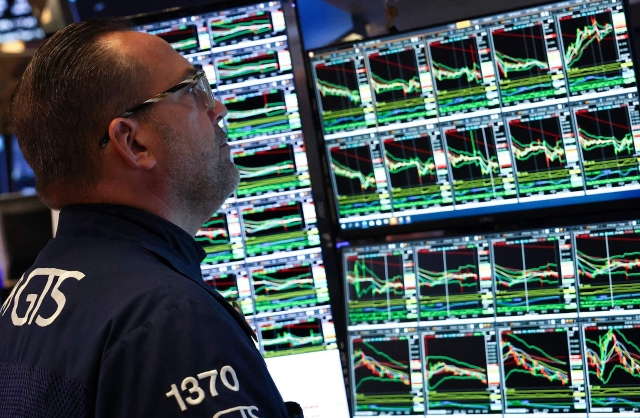
A trader works on the floor of the New York Stock Exchange (NYSE) at the opening bell in New York City, on April 7, 2025. (Photo: CFP)
U.S. tariff policies introduced by President Donald Trump have set off a wave of global market turbulence that unfolded over the past week. By the morning of April 7, stock futures had plummeted dramatically.
On April 2, the Trump administration rolled out a “reciprocal tariffs” policy—imposing a baseline 10% tariff on all trading partners and levying additional tariffs ranging from 20% to 49% on more than 60 nations with significant U.S. trade deficits. This move triggered a massive sell-off in financial markets.
The Nasdaq 100 Index dropped more than 5 percent at one point, and the yield on the two-year U.S. Treasury note slid to 3.4450%, its lowest level since September 2022. European markets were not spared; futures for the Euro STOXX 50 and the DAX Index fell by over 4 percent and nearly 5 percent, respectively. In the Asia-Pacific region, circuit breakers were triggered, halting trading in Nikkei 225 and Topix futures.
The fallout was not limited to financial markets. On April 4, U.S. Federal Reserve Chair Jerome Powell warned that these tariffs could stoke inflation while curbing economic growth. Then, on April 5, protests swept through cities across the U.S., as demonstrators under the banner of the “Hands Off!” movement took to the streets, voicing anger over soaring prices for everyday goods and growing fears of cuts to Social Security benefits.
Defiant amidst the chaos, Trump addressed reporters from Air Force One on April 6, dismissing critics by comparing the tariff measures to “medicine” needed to correct trade imbalances. “I don’t want anything to go down, but sometimes you have to take medicine to fix something,” he declared.
However, experts offered a sharply different assessment in interviews with GDToday, warning that the tariff strategy could ultimately backfire on American businesses and consumers.
Einar Tangen, a senior fellow at the Taihe Institute, pointed to the inflationary risks of the new measures. "The U.S. is the world’s largest importer of aluminium and steel, and domestic production can’t keep up with demand—capacity utilization is already above 90 per cent,” he noted. “Higher tariffs will push up prices for consumers on everything from soda cans to automobiles."
Harold James, professor of history and international affairs at Princeton University and an official historian at the International Monetary Fund, emphasized the broader economic risks. “Many U.S. industries depend on imported inputs. Making those more expensive will reduce competitiveness,” he said. “It’s a deeply self-destructive policy.”
Reporter | Liu Xiaodi, Ouyang Zixuan (intern)
Editor | Yuan Zixiang, James, Shen He

















